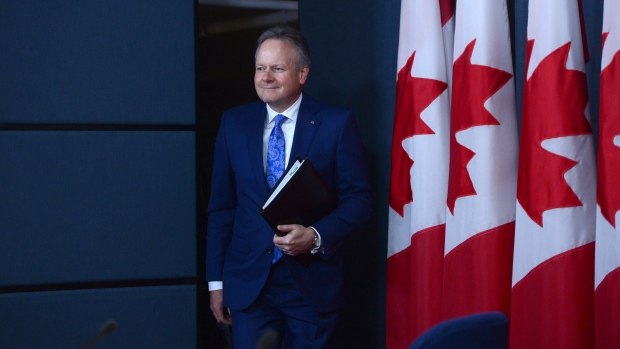Jun 23, 2017
BoC can 'take its sweet time' raising rates with slowing inflation
The Canadian Press

OTTAWA -- Canadian inflation eased up on the accelerator last month as weaker year-over-year growth in gasoline prices helped slow the annual rate to 1.3 per cent, Statistics Canada said Friday.
The May inflation rate was also lower than April's reading of 1.6 per cent because prices declined in electricity, bakery products and Internet access services, the agency said in its latest monthly report.
The data comes as the economy strengthens and the Bank of Canada prepares to make a scheduled interest rate announcement on July 12.
BMO Chief Economist Doug Porter believes the data buys the central bank some time before making a call on raising rates.
"No matter where you look, overall inflation is roughly 1.3% in Canada at this point (or even lower) --- Exhibit A for why the Bank can takes it sweet time before raising rates. Canada’s inflation rate is now not only well below Britain and the US, but it is now also lower than that in China and the EU," Porter wrote in a note to investors.
Last month's smaller inflation number could weigh on the central bank's decision, as the rate moved further away from its ideal target of two per cent.
The latest consumer price index also showed lower readings for two of the Bank of Canada's three preferred measures of core inflation, which the central bank will scrutinize ahead of its interest rate decision.
Governor Stephen Poloz recently signalled he's moving closer to a hike in the benchmark interest rate. Many analysts now believe the bank will start moving the rate upwards from its historically low level of 0.5 per cent before the end of the year.
However, some economists have pointed to weak core inflation as a possible reason for the bank to hold off a little longer.
In its report Friday, Statistics Canada said year-over-year gas prices rose 6.8 per cent in May after climbing 15.9 per cent the previous month.
But despite the slower price growth, gasoline remained one of the biggest upward contributors to inflation last month, along with other costs associated with shelter and transportation.
Last month's 5.5 per cent decline in electricity was one of the biggest downward contributors and recent changes in Ontario's hydro rates appear to have had an impact on the national number.
Compared to a year earlier, Statistics Canada said the price of electricity in the country's most-populated province fell last month by 16.1 per cent.
Ontario had promised to cut electricity bills by an average of 17 per cent and the reductions were scheduled to start taking effect in May.
The Statistics Canada report also found weaker price growth in every province last month, with the biggest slowdown in Manitoba.
Food prices fell 0.1 per cent last month compared to a year earlier, shelter prices rose 1.9 per cent and transportation increased 2.2 per cent.
"Growth is coming in hot, but inflation is not," Nick Exarhos of CIBC Economics wrote in a note to clients.
Exarhos also said the modest slip in two of the central bank's preferred inflation readings cut "against recently more aggressive pricing for a rate hike as early as July."
May inflation rates for Canadian provinces, territories:
Here's what happened in the provinces and territories (previous month in brackets):
- Newfoundland and Labrador: 3.0 per cent (3.6)
- Prince Edward Island: 1.4 (1.6)
- Nova Scotia: 0.5 (0.8)
- New Brunswick: 2.4 (2.7)
- Quebec: 0.7 (0.8)
- Ontario: 1.4 (1.9)
- Manitoba: 1.0 (1.6)
- Saskatchewan: 0.9 (1.4)
- Alberta: 1.2 (1.7)
- British Columbia: 1.9 (2.1)
- Whitehorse, Yukon: 2.1 (2.6)
- Yellowknife, N.W.T.: 1.2 (1.2)
- with files from BNN.ca
